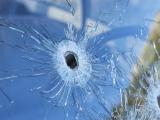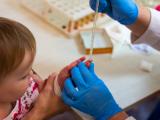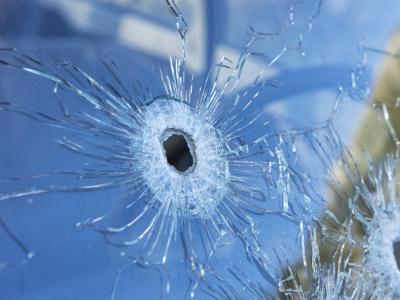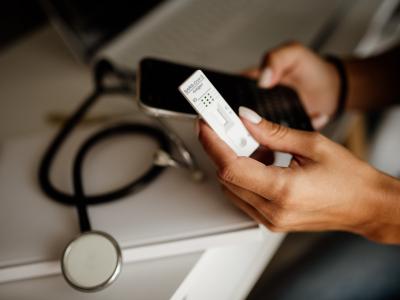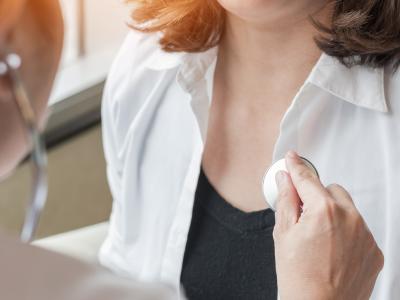Dec 7, 2006 (CIDRAP News) – A new diagnostic tool that involves thousands of fragments of genetic material on a glass slide can identify a vast range of different pathogens, including viruses, bacteria, fungi, and parasites, according to a report from an international team of researchers.
The "GreeneChip system" was successfully tested on samples from patients with respiratory disease, hemorrhagic fever, tuberculosis, and urinary tract infections, researchers from Columbia University and several World Health Organization (WHO) reference laboratories reported this week in Emerging Infectious Diseases. The study's lead author is Gustavo Palacios of Columbia's Mailman School of Public Health in New York City.
The GreeneChip is a slide with more than 29,000 probes, or short strips of genetic material, attached. "When human fluid and tissue samples are applied to the chip, these probes will stick to any closely related genetic material in the samples," the National Institute of Allergy and Infectious Diseases (NIAID), which supported the research, said in a news release. "This allows the rapid and specific identification of any pathogens therein—even those related to but genetically distinct from the ones represented on the chip."
The test was used to identify malaria as the previously unknown disease that had killed a person during the outbreak of Marburg hemorrhagic fever in Angola in 2004 and 2005, according to the report.
The technology can yield a result in as little as 6 hours, Dr. W. Ian Lipkin, senior author of the report, told CIDRAP News. Lipkin, director of the Jerome L. and Dawn Greene Infectious Disease Laboratory at Columbia, said the system is already being made available to major surveillance labs on a collaborative basis. The test can be used on a variety of samples, including respiratory secretions, tissue, blood, urine, and stool.
To create a "panmicrobial" genetic database, the researchers gathered viral genetic sequences from the databases of the International Committee on Taxonomy of Viruses and the US National Center for Biotechnology Information (NCBI). They added sequences for fungi, bacteria, and parasites from the Ribosomal Database Project and the NCBI database, according to their report. The sequences "represent all recognized 1,710 vertebrate viral species and 135 bacterial, 73 fungal, and 63 parasite genera."
The team designed their viral probes to represent at least 3 separate genomic target regions for every family or genus of vertebrate virus. A similar process was used to identify probes for bacteria, fungi, and parasites. The resulting "panmicrobial array" contained 29,495 probes. An inkjet system was used to deposit the probes on glass slides, which can accept up to 244,000 of the genetic fragments, the report says.
To conduct the test, the team isolated genetic material from patient samples, amplified it with polymerase chain reaction (PCR), tagged it with fluorescent "reporter" molecules, and put it in a solution to which the GreeneChip slides were exposed for several hours. After the sides were dried, they were "read" by a laser scanner.
"You look for binding of the material to various probes deposited on the slide," Lipkin explained. "The presence of a binding event is indicated by a fluorescent signal, and the pattern of fluorescent signals on the slide translates to specific identifiers of microbes of all types."
The system was initially tested on material from cultured cells infected with 49 different viruses, all of which were accurately identified. The team then used the system to test samples collected from patients with various diseases. "In all cases, array analysis detected an agent consistent with the diagnosis obtained by culture or PCR," the article states. The pathogens identified included human enterovirus A, respiratory syncytial virus, influenza virus, Marburg virus, SARS coronavirus, lactobacillus, mycobacteria, and gammaproteobacteria.
The test was also used on a sample from a healthcare worker who had died of fever and liver failure during the Marburg outbreak in Angola. Previous tests for Marburg and several other hemorrhagic fevers had been negative. The GreeneChip result, combined with the patient's history of lack of malaria prohylaxis, pointed to Plasmodium falciparum malaria.
Commenting on the speed of the test, Lipkin said, "We can get an answer as rapidly as 6 hours, but routinely we do this procedure overnight, or 12 to 14 hours."
The authors write that the use of microarrays in disease surveillance "has been limited because of low sensitivity and unwieldy analytical programs." They say the GreeneChip system offers improved sensitivity and more user-friendly software.
"The advent of validated highly multiplexed microbiologic assays will afford unprecedented opportunities for unbiased pathogen surveillance and discovery and reduction of illness and death caused by infectious diseases," the report concludes.
Lipkin said his lab is already making the GreeneChip available to people involved in global surveillance networks, such as the Centers for Disease Control and Prevention (CDC), WHO reference labs, and state laboratories.
"Typically what we do is if people have samples, they fly here" and have them tested, he said. "It's still relatively new and there are not a lot of people trained on it."
But Agilent Technologies, which makes the laser scanner, has installed the machine at the CDC and in a New York state lab, and Lipkin's lab will provide training in use of the system, with support from the NIAID, he said.
He said he hopes the system eventually can be used in clinical labs, but he couldn't predict how long that might take. "There are a lot of things that must be done between here and there. The first thing is moving through the appropriate regulatory agencies. . . . But for broad-based surveillance operations, this is likely to be implemented in the very short term. Given that we're already putting it in state and national labs, you could say it's already deployed."
As for cost, Lipkin said the GreeneChip slides cost about $100 in materials, but he was unsure of the cost of the laser scanner. He also said his team searches genetic databases regularly in order to keep the probe sets used in the system up to date.
"I'm convinced it's critical that we develop multiplex diagnostic systems, because testing of agents one at a time is too costly in terms of time, effort, and samples," Lipkin said. "There's no way you could possibly cover as many pathogen targets as you can with this approach."
Palacio G, Quan P-L, Jabado OJ, et al. Panmicrobial oligonucleotide array for diagnosis of infectious diseases. Emerg Infect Dis 2007 Jan;13(1) (Early online publication) [Full text]
See also:
Nov 15, 2006, CIDRAP News story "'Gene chip' test could speed H5N1 diagnosis"
